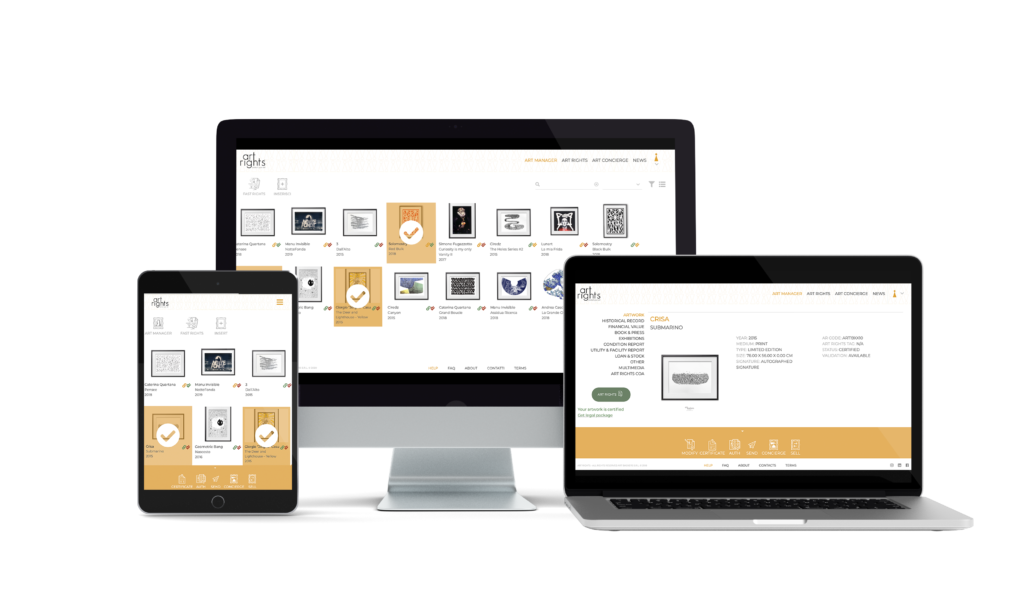COLLECTORS AND THE LOAN OF THE ARTWORKS
The loan of a work of art gives value to the works, but what are the steps for the Collector?
The Collector who chooses to lend a work of art for an exhibition must be reassured on several steps: logistics, handling, preparation, insurance, safety, promotion, communication and much more…
Here are the steps and documentation required of the Collector for the loan of a work of art:
Documents for the loan The organizer of the exhibition initially sends the loan request to the collector or to the owner institution. Immediately after accepting the request, we proceed with the compilation of the documents necessary for the loan
That are:
- The Loan Form, a fundamental document in which the loan conditions are regulated.
- The Condition Report, a document in which the results of the evaluation of the state of a work are reported, dated and signed, before being loaned and by an Expert Restorer or Conservator.
- Artwork Insurance where the conditions provided for by the insurance policy are reported.
- The Facility Report, that is the document that describes the characteristics of the exhibition site, both from the point of view of safety / surveillance, and the conditions of display and conservation of the works.
Within a museum, the Registrar is the professional figure who deals with the management of the loan and all the logistical activities of the work during all phases involving the loan.
For the Collector, on the other hand, it is possible to foresee the presence of an Art Collection Manager or a Fine Art Logistic Expert, two very different professionals in terms of training and skills, but able to support the collector in this delicate phase.
Transport of the work
The transport of the work is a very delicate phase that requires the intervention of experienced professionals, who will have to prepare all the precautions in terms of handling and packaging based on the specificity of the asset. During transport it is also necessary to fill in a transport document (DDT), on which the recipient of the work, the transporter, the registrar, the fitter or the lender notes the conditions of the work and of the packaging upon arrival.
The staging of the exhibition
The setting up is one of the most risky phases for the integrity of the work: for this reason it is essential to always take into consideration its conservation, display and safety needs. During the set-up it therefore becomes appropriate to document the movements, equipment and devices used, in order to facilitate future set-ups.
Given the complexity of the operation, it becomes of fundamental importance to use both a digital archive, to have an updated history of all the information on the work, and professionals capable of managing each phase of the loan with competence.
Among the useful tools for archiving works of art we find Art Rights, a platform that offers professionals as well as collectors the opportunity to document and record the loan phase of works of art with over 200 fillable fields depending on information within the Art Rights Certificate, the first Passport of the work of art
And you, are you ready to lend your works?
Photo credits: Photo courtesy of MIT List Visual Arts Center.






